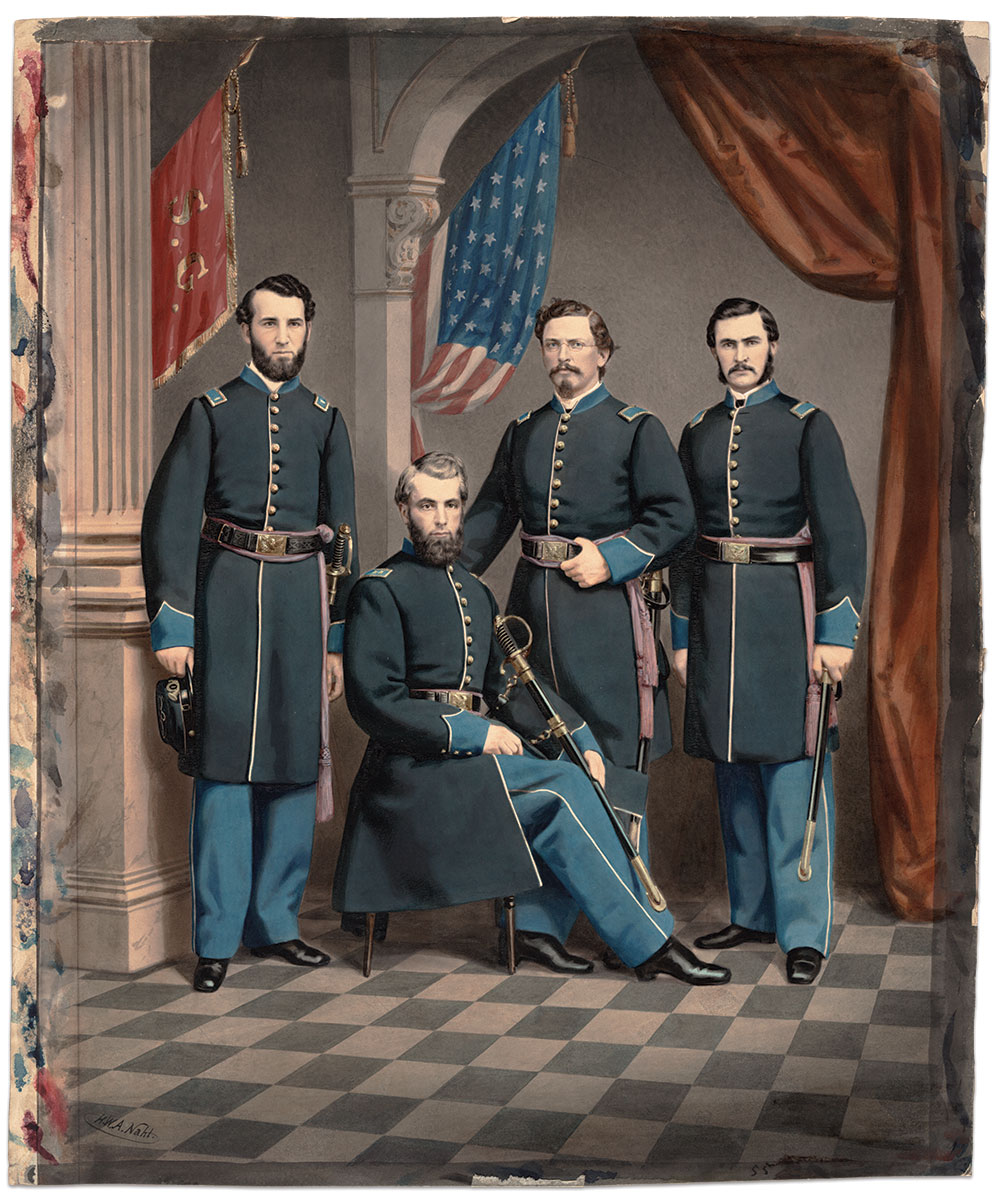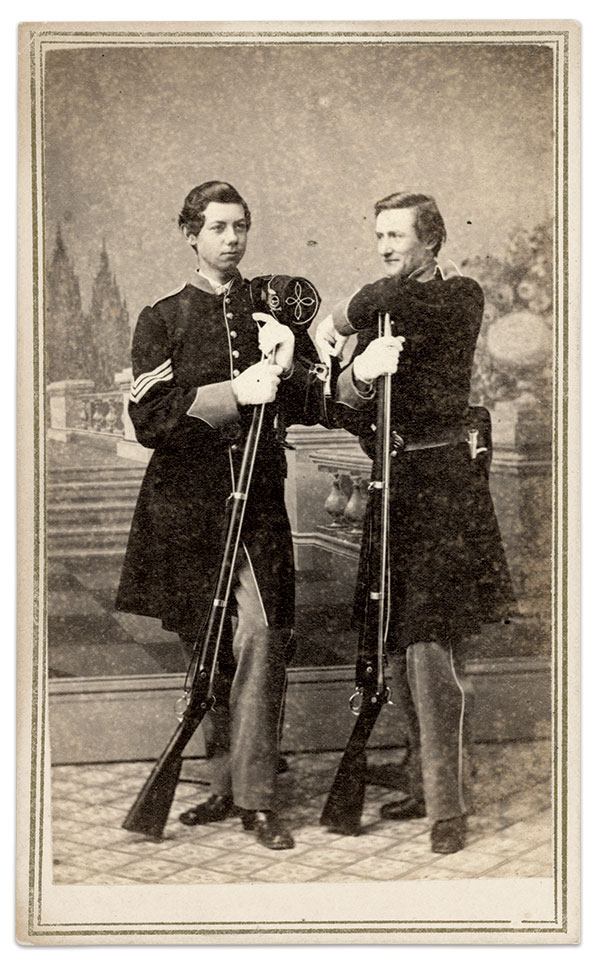By Anthony F. Gero
In early 1864, Californians glimpsed new uniforms for state militia. A report in the Sacramento Bee sets the scene:


“At the window of Lamott’s on J street near Second may be seen the infantry uniform adopted for the organized companies of the California militia. The frock coat is of dark blue; the cuffs and collar are light blue, and there are light blue straps upon the shoulders. The garment is made of stout, serviceable cloth, and will do good service. It has the regular army button. The pants are of light blue, and are also well made, of good stout cloth. The hat is of the regular army pattern, felt, looped up on one side, with a white cord and a black ostrich feather-by the way, the silliest army head covering ever worn by our troops. The forage caps, trimmed with white cord. Mr. Lamott has received two thousand of these uniforms, of which the Fourth Brigade will require about fifteen hundred. He is allowed by the State $25 for each, in warrants. This will make the cost of the uniforms of the Fourth Brigade, alone, $37,500. Mr. Lamott is entitled to credit for his enterprise in the furnishing so handsome and durable a uniform at so low a rate. We understand that he has made arrangements to furnish as many as may be desired at the same rate, and that he can also supply cavalry, artillery, and rifle uniform.”
The merchant is Anthony Lamott (1835-1894). Part of the wave of western migration before the Civil War, Lamott left his home in Lansingburgh, N.Y., and struck out for the frontier. A hatter by profession, he established the Eagle Hat Store in Sacramento by 1857. In late 1863, Lamott secured the contract for supplying the militia with uniforms. “There was a spirited competition among those in the trade for this contract, and Lamott turns up the lucky man,” reported The Daily California Express on November 17. On a side note, Lamott does not turn up in Bazelon and McGuinn’s standard reference, A Directory of American Military Goods Dealers and Makers 1775-1950.
Two portraits reproduced here compare favorably to the description in the Bee. They also provide researchers, historians, and collectors with a better vista of the California Volunteer Militia in 1864-1865.
One image, a tinted large albumen by noted photographer, engraver and painter Hugo Wilhelm Arthur Nahl, pictures officers in Company A of the first regiment. It is a close match to the description.
The other, a carte de visite by San Francisco photographer Benjamin Franklin Howland, pictures a sergeant and enlisted man that compares favorably with the Nahl portrait and the description. Note that the sergeant’s forage cap is trimmed on the top with a trefoil and around the seams in white. Each soldiers’ cap has an infantry horn device on the front and in one the number “1” appears to be on the inside of the horn’s loop. These caps differ from the newspaper account that appears to refer to a Hardee dress hat.
The chevrons on the sergeant’s sleeves appear light in color and were possibly of white cloth. Observe too that piping extends down the fronts of the frock coats and is probably white. The Bee’s description states that the collars and cuffs are to be light blue and that the shoulder straps are also of the same color. One can conclude the straps are light blue piped white, and that can be said as well for the cuffs and collars.
References: Sacramento Bee account of uniforms in Lamott’s store reprinted in the Weekly Trinity Journal, Weaverville, Calif., March 26, 1864; The Nevada Journal, Nevada City, Calif., Jan. 2, 1857; Bazelon and McGuinn, A Directory of American Military Goods Dealers and Makers 1775-1950, Volume 2; The Daily California Express, Marysville, Calif., Nov. 17, 1863.
A retired high school teacher in Auburn, N.Y., Anthony F. Gero taught history at Cayuga Community College, State University of New York, holds an MA-History from SUC at Cortland, and is a Fellow of the Company of Military Historians. He has written more than 200 articles on military history, is the author (with Roger Sturcke) of New York State National Guard and Black Soldiers of New York State: A Proud Legacy (SUNY Press, 2009). He is currently working on Excelsior’s Civil War Militia and National Guard, State of New York: their uniforms and equipage 1860-1870—a selected photographic and illustrated history with Alan Archambault. He is a MI Contributing Editor.
SPREAD THE WORD: We encourage you to share this story on social media and elsewhere to educate and raise awareness. If you wish to use any image on this page for another purpose, please request permission.
LEARN MORE about Military Images, America’s only magazine dedicated to showcasing, interpreting and preserving Civil War portrait photography.
VISIT OUR STORE to subscribe, renew a subscription, and more.

